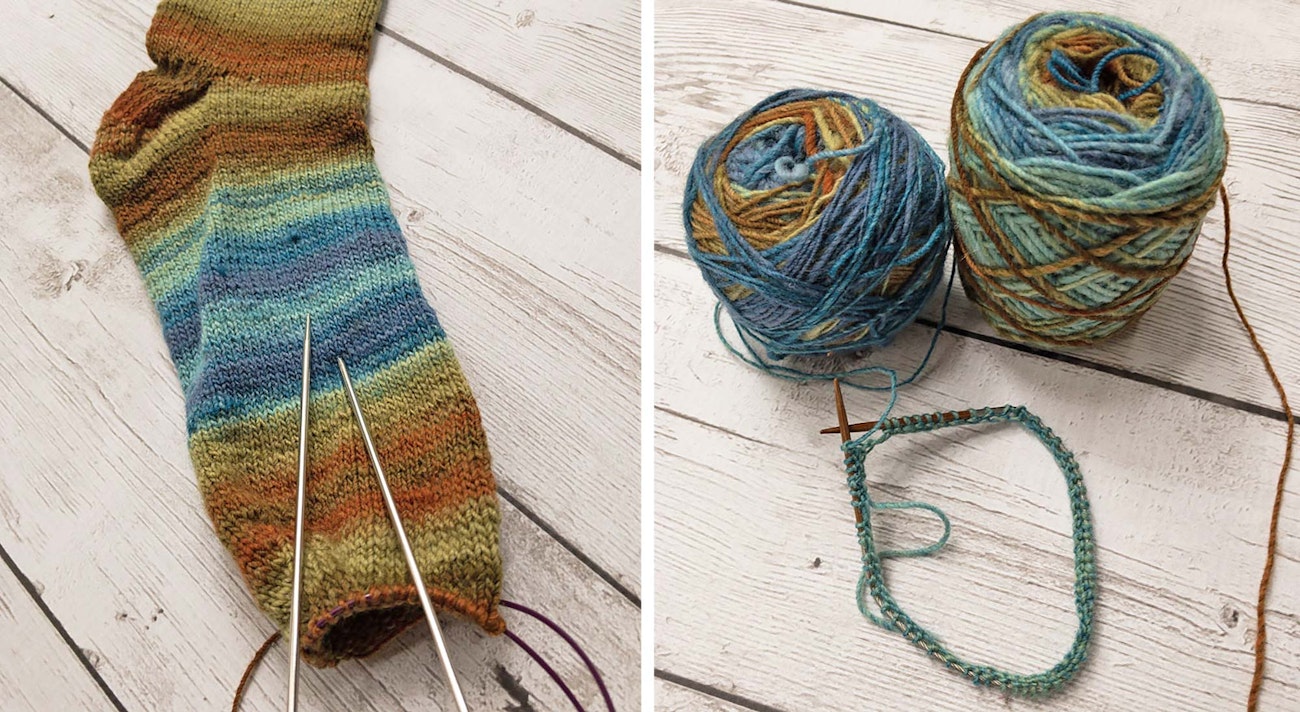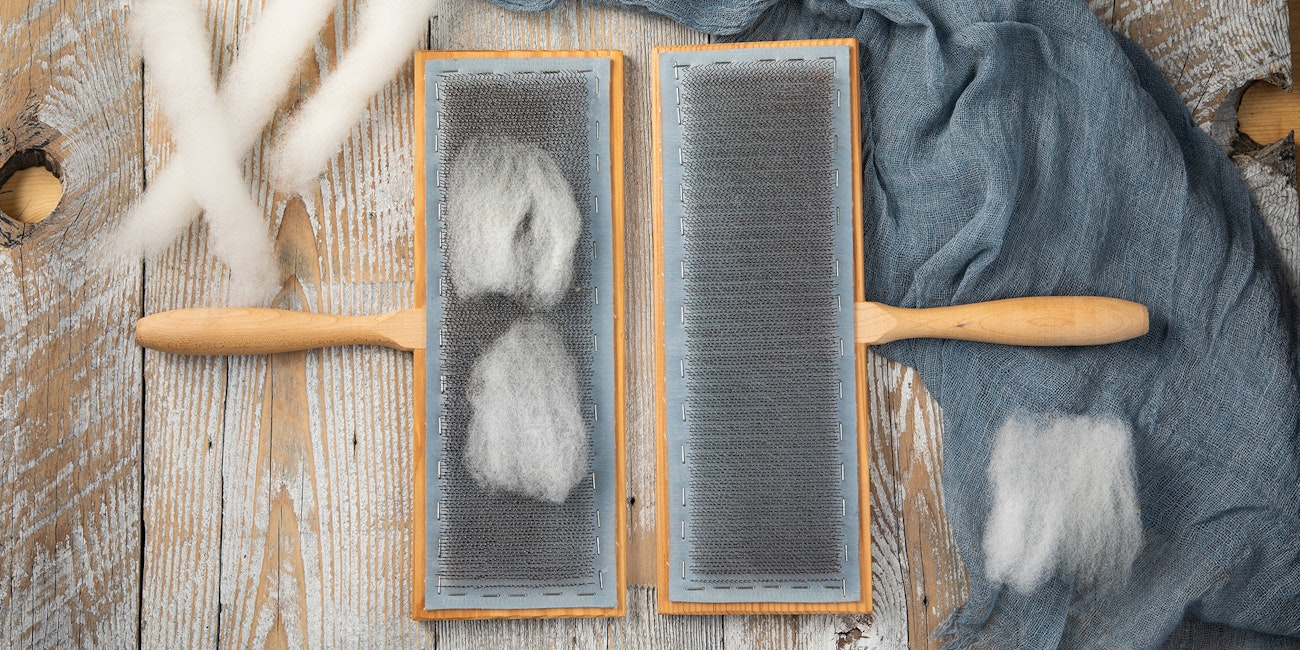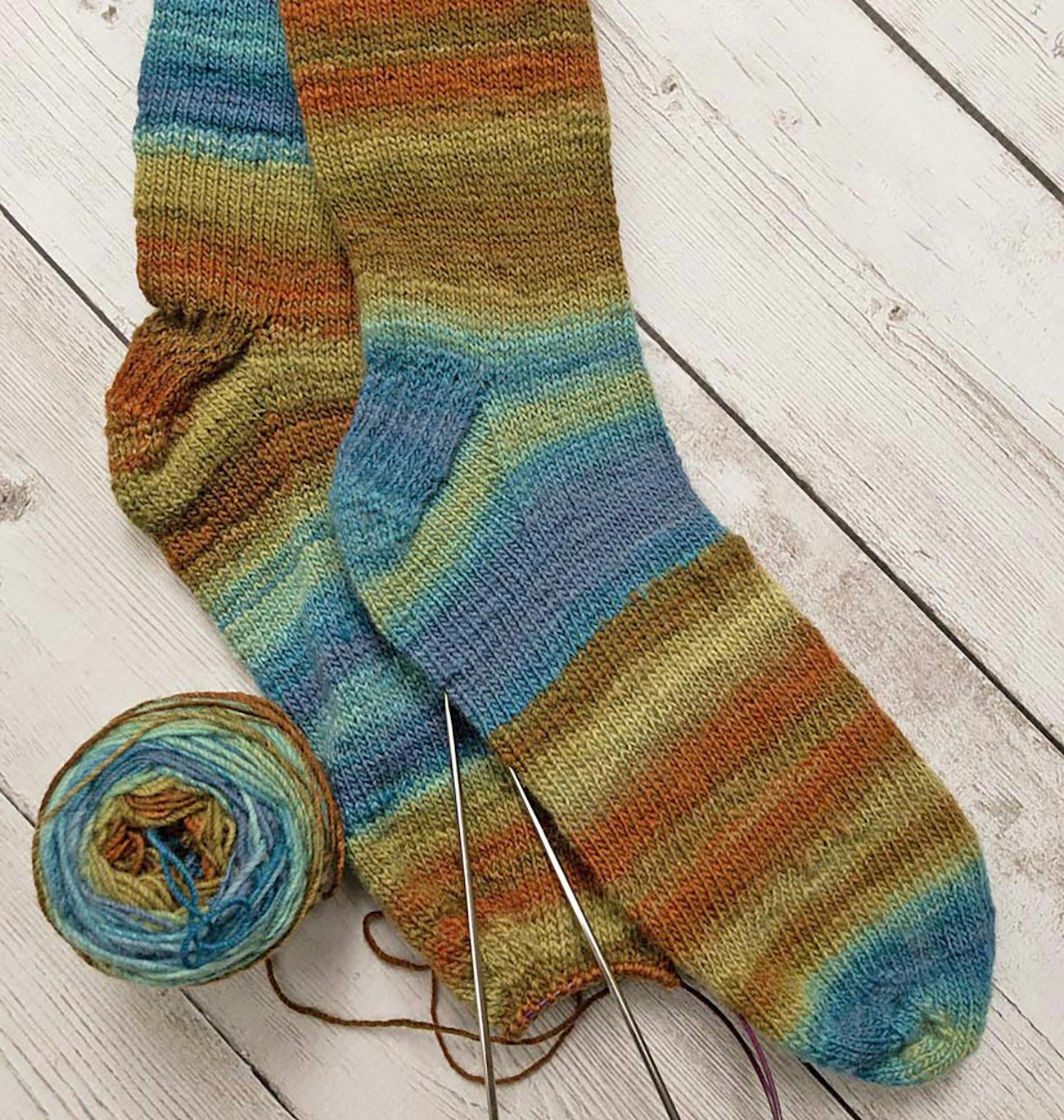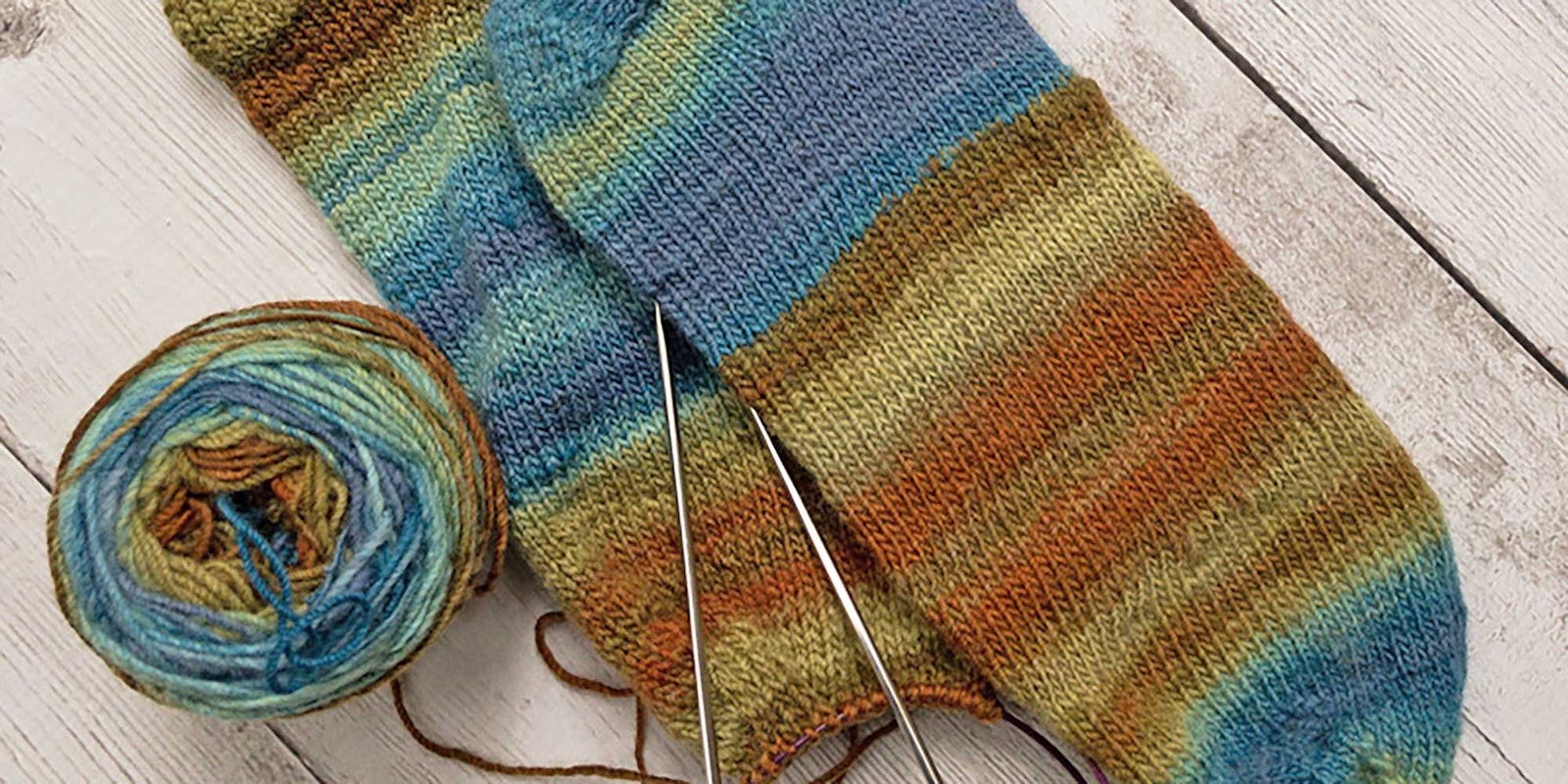A couple of things I thought I knew about myself: I don’t love spinning Targhee as much as I do so many other sheep breeds and blends, and I’m not the biggest fan of sock knitting. I felt sure of this knowledge until a few days ago when I came across a languishing WIP, a pair of handspun, handknitted socks (in . . . Targhee) so completely sensational that they called into question whether I knew myself at all.
The socks were nearly complete, save for the toe of the second one. As I got to work on completing it, I was reminded of the positive feelings I’d initially had from both the spinning and knitting of this very pair of socks (plus knowledge gained since), and so I stand corrected: spinning Targhee, or even superwash Targhee (as was the case here), especially as a sock yarn, is actually a rewarding and stellar endeavor. I simply didn’t execute it all as well as I could have in this example, but that’s on me, not on Targhee.
 Debbie works to complete the toe of the socks that will ultimately become her mother’s (left) and uses the leftover yarn to cast on a pair of shortie socks for herself (right).
Debbie works to complete the toe of the socks that will ultimately become her mother’s (left) and uses the leftover yarn to cast on a pair of shortie socks for herself (right).
Here are just three reasons why Targhee makes for excellent sock yarn:
1. Has well-bred characteristics
Targhee was developed by the USDA Sheep Experiment Station in Idaho in the 1920s with the intention of creating an “ideal” wool: soft yet durable with a distinguished hand. Crossed with 3/4 fine wool and 1/4 longwool, the resulting breed is Merino-soft, highly crimpy (for elasticity and memory), yet somehow both lofty and plush at the same time. For more about the Sheep Experiment Station, read “Your Tax Dollars at Wool: United States Sheep Experiment Station” by Susan Clotfelter in Spin Off Winter 2018.
Your socks will not only stay up, but the fabric itself is unlike any other handspun/handknitted of which I’m aware. When knit at a dense gauge and combined with the wool’s trademark matte finish, the fabric reminds me of the well-known, iconic German commercial sock yarns so many of us know and love. Your feet will thank you for years to come.
 Targhee’s locks are dense and uniform, with a lot of crimp. Photo by Matt Graves
Targhee’s locks are dense and uniform, with a lot of crimp. Photo by Matt Graves
2. Plays nicely with others
Spinning-wise, Targhee is adaptable to any spinner’s form. Incredibly easy to draft, it can be spun worsted or woolen, or anywhere in between, with ease and equally good results. It accepts high-twist, as you can see here.
3. Knows when to let go
If you’ve had trouble spinning singles fine enough for a true sock-weight three-ply or chain-ply yarn, try again with some Targhee top. Its origin crossbreeds of Rambouillet, Corriedale, and Lincoln help to make this fiber an excellent choice for so many end projects. The superwash wool I used seems dense even in fiber form, and it will spin as thin as I want to go.
So what went wrong with my socks?
Simple. They don’t fit! They are too small for me, but hopefully my own error can help you avoid your own. I prefer to knit a 10-percent negative ease into the fit of my size 11 clodhoppers (so basically I knit to a true women’s size 10 sock), yet what I didn’t factor in here was precisely what made my handspun superwash Targhee so special in its completed form: its dense cloth. Elasticity, or memory, is not the same thing as stretch or give.
These socks have no give at all, but that’s okay. My mother, a size 9, will absolutely love them! Equally great, I still have plenty of yarn left for a pair of shortie socks for myself, which I have just cast on. Everyone’s a winner!
 The top sock has been washed to highlight the finished fabric.
The top sock has been washed to highlight the finished fabric.
And yes, perhaps I actually do enjoy knitting socks, but only within certain parameters: when knit with handspun yarn and plain “vanilla” knitting (no fancy stitchwork). I also like it when said socks fit me, but that’s normally not an issue.
Regardless, it’s great to be back in the sock-knitting saddle.
Do you have a favorite fiber for spinning into sock yarn?
Deborah Held has been committed to spinsterhood since 2012. She’s a freelance writer, author, and international and online fiber arts educator. She and her Persian cat, Stanley, live on an urban farm in Atlanta, Georgia, where a spinner’s flock of Shetland sheep roam beneath their windows. Find them at debbieheld.com.
Originally published July 6, 2018; updated December 25, 2023.

